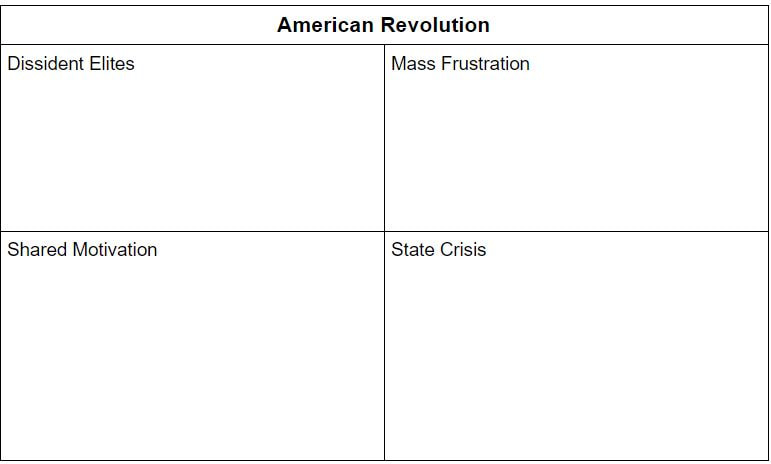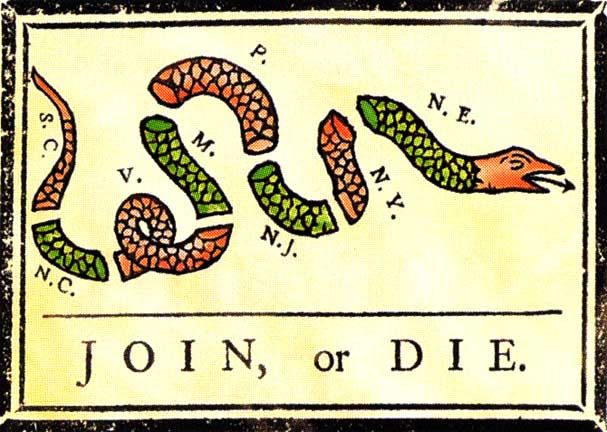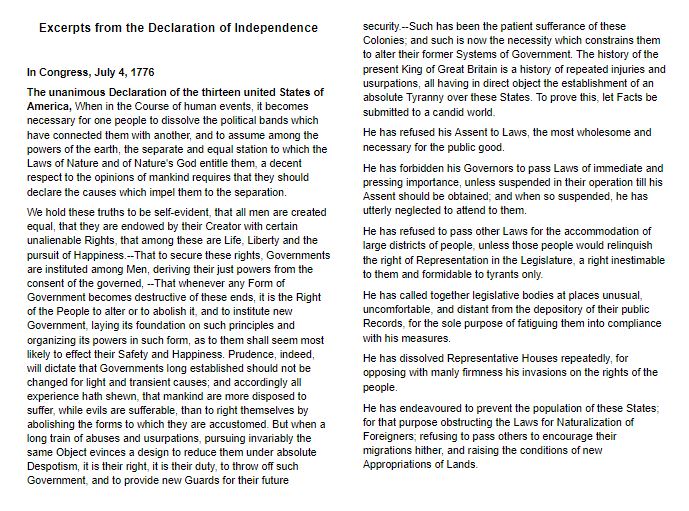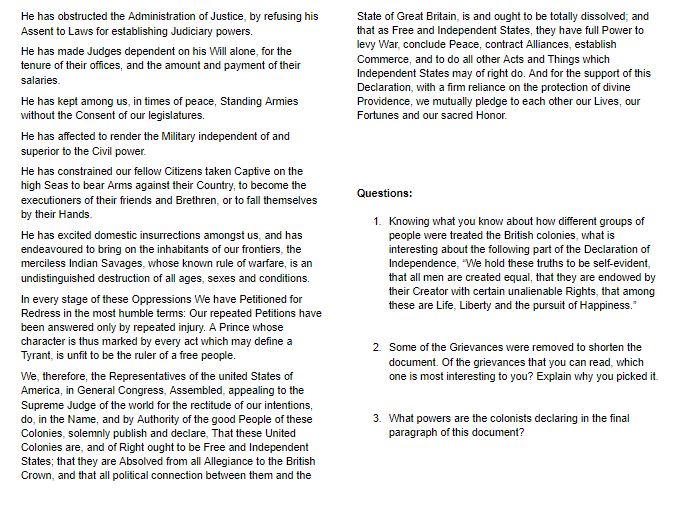Image Source - Untold Truths About the American Revolution
Standard
HS.H3.4: Evaluate how societies have balanced individual freedoms, responsibilities, and human dignity versus the common good.
Learning Target
I can explain multiple causes of conflict and evaluate the outcomes of various revolutions throughout the c.1600s-c.1800s.
Instructions
Complete the 3 Parts of the Lesson below.
Guided Notes
Copy the table below into your notes.
The goal throughout the parts is to add to each of the boxes information that will help you identify these characteristics of a revolution.
HS.H3.4: Evaluate how societies have balanced individual freedoms, responsibilities, and human dignity versus the common good.
Learning Target
I can explain multiple causes of conflict and evaluate the outcomes of various revolutions throughout the c.1600s-c.1800s.
Instructions
Complete the 3 Parts of the Lesson below.
Guided Notes
Copy the table below into your notes.
The goal throughout the parts is to add to each of the boxes information that will help you identify these characteristics of a revolution.
Part 1 - Analyzing a Political Cartoon
Analyzing is a process that will help you better understand what you are trying to figure out.
Start off by stating what you see so that you can try to make sense of what the overall message is.
First, what do you see? Be very specific. Colors. Words. Symbols.
Second, what do you think the overall message is of this source?
Start off by stating what you see so that you can try to make sense of what the overall message is.
First, what do you see? Be very specific. Colors. Words. Symbols.
Second, what do you think the overall message is of this source?
Part 2 - Videos - Oversimplified
Part 3 - Primary Source Reading with Questions
The Declaration of Independence: What Does it Say?
The Declaration of Independence was designed for multiple audiences: the King, the colonists, and the world. It was also designed to multitask. Its goals were to rally the troops, win foreign allies, and to announce the creation of a new country. The introductory sentence states the Declaration’s main purpose, to explain the colonists’ right to revolution. In other words, “to declare the causes which impel them to the separation.” Congress had to prove the legitimacy of its cause. It had just defied the most powerful nation on Earth. It needed to motivate foreign allies to join the fight.
Preamble
These are the lines contemporary Americans know best: “We hold these truths to be self-evident, that all men are created equal, that they are endowed by their Creator with certain unalienable rights, that among these are Life, Liberty and the Pursuit of happiness.” These stirring words were designed to convince Americans to put their lives on the line for the cause. Separation from the mother country threatened their sense of security, economic stability, and identity. The preamble sought to inspire and unite them through the vision of a better life.
List of Grievances
The list of 27 complaints against King George III constitute the proof of the right to rebellion. Congress cast “the causes which impel them to separation” in universal terms for an international audience. Join our fight, reads the subtext, and you join humankind’s fight against tyranny.
Resolution of Independence
The most important and dramatic statement comes near the end: “That these United Colonies are, and of Right ought to be Free and Independent States.” It declares a complete break with Britain and its King and claims the powers of an independent country.
The Declaration of Independence was designed for multiple audiences: the King, the colonists, and the world. It was also designed to multitask. Its goals were to rally the troops, win foreign allies, and to announce the creation of a new country. The introductory sentence states the Declaration’s main purpose, to explain the colonists’ right to revolution. In other words, “to declare the causes which impel them to the separation.” Congress had to prove the legitimacy of its cause. It had just defied the most powerful nation on Earth. It needed to motivate foreign allies to join the fight.
Preamble
These are the lines contemporary Americans know best: “We hold these truths to be self-evident, that all men are created equal, that they are endowed by their Creator with certain unalienable rights, that among these are Life, Liberty and the Pursuit of happiness.” These stirring words were designed to convince Americans to put their lives on the line for the cause. Separation from the mother country threatened their sense of security, economic stability, and identity. The preamble sought to inspire and unite them through the vision of a better life.
List of Grievances
The list of 27 complaints against King George III constitute the proof of the right to rebellion. Congress cast “the causes which impel them to separation” in universal terms for an international audience. Join our fight, reads the subtext, and you join humankind’s fight against tyranny.
Resolution of Independence
The most important and dramatic statement comes near the end: “That these United Colonies are, and of Right ought to be Free and Independent States.” It declares a complete break with Britain and its King and claims the powers of an independent country.



